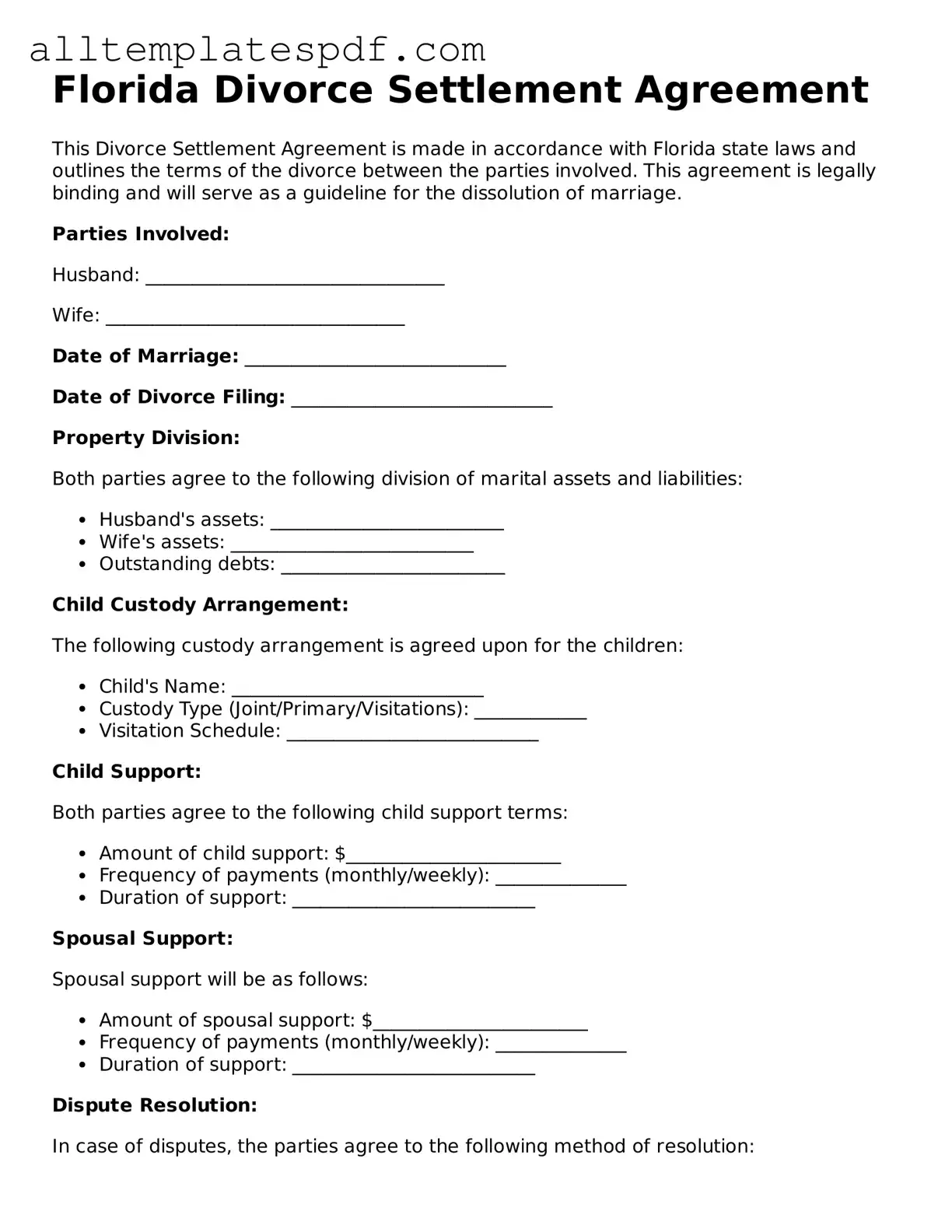Filling out the Florida Divorce Settlement Agreement form can be a daunting task. Many individuals make common mistakes that can complicate the process. One frequent error is failing to provide accurate information. This can include incorrect names, addresses, or financial details. Such inaccuracies can lead to delays and even legal complications.
Another mistake is not fully understanding the terms of the agreement. Some people may sign without fully grasping what they are agreeing to. This can result in unintended consequences, especially regarding asset division and child custody arrangements. It is crucial to read and comprehend every section before signing.
Omitting important details is another common pitfall. For instance, individuals might forget to include specific assets or debts. This oversight can create disputes later on. It’s essential to list all marital property and liabilities to avoid future misunderstandings.
People often underestimate the importance of legal advice. Many choose to fill out the form without consulting a lawyer. This can lead to mistakes that might have been avoided with professional guidance. Seeking legal counsel can provide clarity and help ensure that all aspects of the agreement are fair and legally sound.
Additionally, failing to consider tax implications is a mistake that can have long-term financial consequences. Divorce can affect your tax situation, and individuals often overlook how asset division might impact their taxes. Consulting a tax professional can provide valuable insights.
Another error is not discussing the agreement with your spouse. Open communication can prevent misunderstandings and foster cooperation. When both parties are involved in the process, it can lead to a more amicable resolution.
Some individuals rush through the process, eager to finalize the divorce. This haste can lead to incomplete or inaccurate forms. Taking the time to carefully review and complete the agreement is vital for ensuring that all terms are clear and enforceable.
Finally, neglecting to keep copies of the completed agreement can create issues down the line. It is important to retain a copy for your records. This ensures that both parties have access to the same information and can refer back to the agreement if any disputes arise.
